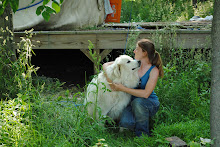 Forget Life, Trivial Pursuit, or that ancient computer game Oregon Trail. My new favorite game is a Serenbe exclusive: "So You Want to be a Farmer?" After a morning of normal farm work (weeding , harvesting, moving our chickens to fresh pasture) we retired to Paige's house with MacBooks in tow for an afternoon surprise. She emerged from her office with a stack of seed catalogs and the rules of the game: we had just acquired 1 acre of flat, fertile Northwest Georgia farmland (is there such a thing?). We had committed to feed a 25-member CSA for 28 weeks, with a minimum of 5 items in each share. Labor and tractor work were taken care of. A collection of excel sheets--for seed ordering, crop planning, and harvest predictions--whooshed into our inboxes. We had 1 hour 45 minutes to plan our strategy.
Forget Life, Trivial Pursuit, or that ancient computer game Oregon Trail. My new favorite game is a Serenbe exclusive: "So You Want to be a Farmer?" After a morning of normal farm work (weeding , harvesting, moving our chickens to fresh pasture) we retired to Paige's house with MacBooks in tow for an afternoon surprise. She emerged from her office with a stack of seed catalogs and the rules of the game: we had just acquired 1 acre of flat, fertile Northwest Georgia farmland (is there such a thing?). We had committed to feed a 25-member CSA for 28 weeks, with a minimum of 5 items in each share. Labor and tractor work were taken care of. A collection of excel sheets--for seed ordering, crop planning, and harvest predictions--whooshed into our inboxes. We had 1 hour 45 minutes to plan our strategy.Ok, so an hour forty-five is hardly enough time to figure out everything from seed varieties to succession timing, to crop rotations. (Especially when you're an English major who can barely convince Excel to give you a sum). Still, the challenge was a thrilling one, the giddy excitement of Christmas laced with the adrenaline tang of a test. I eat this stuff up. Through trial and error and many questions for Paige (how many bed feet of kale should we plan on per member? How many harvest weeks can we expect from an eggplant?) we each began to craft our imaginary farm. I began by picking my crops: beets can grow here year round, so I planned for them as a constant. I'd plant kale, turnips, and cabbage for spring with a corner plot for strawberries to add color to my share. I'd transition to early summer by adding beans, onions, and potatoes, as well as cucumbers. High summer would usher in tomatoes, eggplants, and unkillable okra, then back to my spring crops as the days dwindled into fall. Of course, I wanted to plant about 30 additional crops, but time and space forced me to move on.
First lesson: planning for a CSA is hard. Or at least, it is difficult to plan a full year of growing so that your harvest is consistent, never too large or too small. Second lesson: Excel can do magical things. Paige has created a spreadsheet that, with the entry of bed feet and number of successions can tell you exactly how many ounces of seed to purchase and how many pounds of produce to expect. Third lesson: one acre is a surprisingly large amount of space. Jack, Steph, and I all found ourselves with large swaths of land uncultivated by our modest models. "I guess I'll just cover crop the rest," exclaimed Steph.
As we raced against the clock, Paige threatened to hit us with challenges--pests, weather, and the like. Luckily, with the tractor work accounted for, we knew that our oxen couldn't die, as had ruined many a game of Oregon Trail.
In the end, we didn't fully finish planning our season. Then again, Paige admitted that it took her almost a full week to plan her first year here at Serenbe. As we relinquished Paige's dining room and packed up our things, all three of us continued to mull over unfinished business. I, ever the Ag nerd, hopefully inquired whether we might continue our work and perhaps make presentation Monday (on tri-fold posterboard? please?). Paige laughed, promised that we would try similar games in the future, and reminded me that I probably didn't want to spend my Labor Day weekend leafing through seed catalogs. Maybe I'll start looking for farmland instead...



